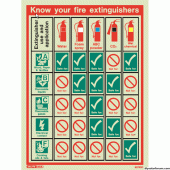Now I know what I’ll do with my spare Nest cameras. The motion detector will definitely see something change (flash, flame or smoke) and send an alert to my phone. if I set sensitivity to max. Already have house network smoke and heat detectors above(not internet). That would definitely wake the house and 99% of the time an adult is there.I am an auto buff - by otheraddictioner hobby, and on the car forums I have seen quite a lot of chat about LTO - from Honda Plug-in hybrids IIRC. They have often talked about doing a manual balance a few times per year "if needed" or checking the balance every few months. This was why I asked the OP if they 'needed' 10-amp balance - since it didn't seem to add up with what I have read over the last few years in the automotive area.
agree.
Some proper connections, bus bars and cases would be a great start. He said five packs - so this was not some spur of the moment set up, just to test an idea for a few days, this was a build. Hope he comes back and learns something from the more experienced among the forum.
I have to wonder if the voltage range for those LTP allowed his current to climb as the voltage dropped down lower and lower, I can imagine from the comments about "pushing the system to the limit" could mean the voltage dropped to sub-48v and the amperage climbed to maintain the power output increasing heating at a poor connection leading to the arc and cell exploding. Too bad there wasn't a camera set up to record the whole event, we could have seen what happened. I should put a cheap aftermarket dash-cam in my solar room, to watch and record in a loop what is going on in there!
If as you say, if he replaces the blown cell, what are the other changes this set up needs to be safe(er):
Proper bus bars and cell holders,
proper sensor wires and ring terminals for the BMS leads,
metal cases for each pack,
Heat and smoke detectors in the vacinity - alarm in the house and link to his phone,
some relays to allow remote disconnect of the ESS ?
I would be interested to know what the rest of the system set up looks like, and what loads are being applied.
List to do today, tidy up garage, order Co2 extinguisher, check cell torque, set out new glue traps and mount Nest cameras.




